-
 Bitcoin
Bitcoin $92,857.3496
-1.03% -
 Ethereum
Ethereum $1,750.4828
-2.45% -
 Tether USDt
Tether USDt $1.0005
0.05% -
 XRP
XRP $2.1885
-2.18% -
 BNB
BNB $597.4359
-1.69% -
 Solana
Solana $149.8729
-1.30% -
 USDC
USDC $1.0000
0.01% -
 Dogecoin
Dogecoin $0.1788
-0.25% -
 Cardano
Cardano $0.7255
3.02% -
 TRON
TRON $0.2464
0.28% -
 Sui
Sui $3.2757
10.22% -
 Chainlink
Chainlink $14.8489
-0.12% -
 Avalanche
Avalanche $22.0620
-1.11% -
 Stellar
Stellar $0.2755
2.43% -
 UNUS SED LEO
UNUS SED LEO $9.2218
1.65% -
 Toncoin
Toncoin $3.1533
-0.18% -
 Shiba Inu
Shiba Inu $0.0...01341
-1.13% -
 Hedera
Hedera $0.1856
1.66% -
 Bitcoin Cash
Bitcoin Cash $349.6685
-3.25% -
 Polkadot
Polkadot $4.1453
0.80% -
 Litecoin
Litecoin $82.8054
-1.43% -
 Hyperliquid
Hyperliquid $17.9889
-3.15% -
 Dai
Dai $1.0001
0.00% -
 Bitget Token
Bitget Token $4.4327
-1.75% -
 Ethena USDe
Ethena USDe $0.9995
0.02% -
 Pi
Pi $0.6476
-1.41% -
 Monero
Monero $227.9399
-0.28% -
 Uniswap
Uniswap $5.8086
-3.78% -
 Pepe
Pepe $0.0...08567
-4.18% -
 Aptos
Aptos $5.4495
1.50%
How to adjust the gas fee of Rabby Wallet?
Adjust gas fees in Rabby Wallet to optimize Ethereum transactions: access settings, adjust gas price and limit, use presets, and confirm to manage costs effectively.
Apr 24, 2025 at 05:35 pm
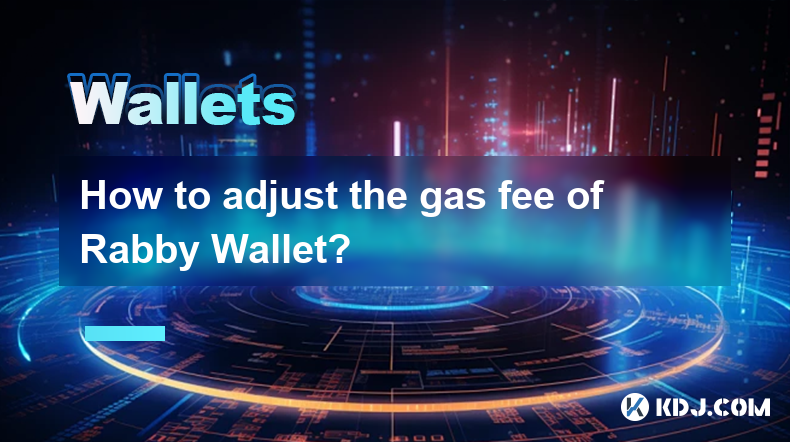
Adjusting the gas fee in Rabby Wallet is an essential skill for users who want to optimize their transactions on the Ethereum network. Gas fees are payments made to miners for processing transactions and executing smart contracts on the blockchain. By understanding how to adjust these fees, users can manage their transaction costs more effectively. This article will guide you through the process of adjusting gas fees in Rabby Wallet, ensuring that you can make informed decisions about your transactions.
Understanding Gas Fees
Before diving into the adjustment process, it's important to understand what gas fees are and why they matter. Gas fees are measured in units called "gas," and the price of gas is denominated in Gwei, which is a subunit of Ether (ETH). The total gas fee for a transaction is calculated by multiplying the amount of gas used by the gas price. Higher gas prices can lead to faster transaction processing, but they also increase the cost. Conversely, lower gas prices may result in slower transaction times but can save money.
Accessing the Gas Fee Settings in Rabby Wallet
To adjust the gas fee in Rabby Wallet, you first need to access the transaction settings. Here's how you can do it:
- Open Rabby Wallet: Launch the Rabby Wallet application on your device.
- Initiate a Transaction: Navigate to the section where you want to send or interact with a smart contract. This could be the "Send" or "Interact" section, depending on your specific action.
- Enter Transaction Details: Fill in the necessary details such as the recipient's address and the amount of ETH you want to send.
- Access Advanced Settings: Look for an option labeled "Advanced" or "Gas Settings." This is usually found at the bottom of the transaction page. Click on it to proceed to the gas fee adjustment section.
Adjusting the Gas Fee
Once you are in the gas fee settings, you can adjust the gas price and gas limit according to your needs. Here's a detailed guide on how to do it:
- Gas Price: This is the amount you are willing to pay per unit of gas. You can adjust this value to a higher or lower amount. Higher gas prices can lead to faster transaction confirmations, while lower gas prices may result in longer wait times.
- To increase the gas price, enter a higher value in the gas price field. For example, if the current suggested gas price is 20 Gwei, you might increase it to 30 Gwei for faster processing.
- To decrease the gas price, enter a lower value. For instance, if the suggested gas price is 20 Gwei, you might decrease it to 10 Gwei to save on costs.
- Gas Limit: This is the maximum amount of gas you are willing to use for the transaction. The gas limit should be set high enough to ensure the transaction is processed but not so high that you pay unnecessarily high fees.
- To adjust the gas limit, enter a value that you believe is sufficient for your transaction. For simple transactions like sending ETH, a gas limit of 21,000 is usually sufficient. For more complex interactions with smart contracts, you might need to increase this value.
Using Preset Gas Fee Options
Rabby Wallet often provides preset gas fee options to simplify the process for users. These options are typically labeled as "Low," "Medium," and "High," corresponding to different gas prices. Here's how to use them:
- Select a Preset Option: Instead of manually entering gas price and gas limit values, you can choose one of the preset options.
- Low: This option sets a lower gas price, which can result in slower transaction times but lower costs.
- Medium: This is a balanced option that offers a reasonable speed at a moderate cost.
- High: This option sets a higher gas price for faster transaction processing, but at a higher cost.
Confirming and Submitting the Transaction
After adjusting the gas fee to your satisfaction, you need to confirm and submit the transaction. Here's how to do it:
- Review the Transaction Details: Double-check the recipient's address, the amount of ETH, and the adjusted gas fee settings to ensure everything is correct.
- Confirm the Transaction: Click on the "Confirm" or "Submit" button to proceed with the transaction. You may be prompted to enter your wallet password or use your hardware wallet to authorize the transaction.
- Monitor the Transaction: Once submitted, you can track the status of your transaction on the Ethereum blockchain explorer. The transaction hash provided by Rabby Wallet can be used to monitor its progress.
Troubleshooting Common Issues
Sometimes, users may encounter issues when adjusting gas fees. Here are some common problems and their solutions:
- Transaction Stuck: If your transaction is taking too long to process, it might be due to a low gas price. You can try speeding up the transaction by increasing the gas price and resubmitting it.
- Transaction Failed: If a transaction fails due to an insufficient gas limit, you can increase the gas limit and resubmit the transaction. Be sure to check the error message for specific details on why the transaction failed.
- High Gas Fees: If gas fees are unusually high, you might want to wait for a less congested period on the Ethereum network before submitting your transaction.
Frequently Asked Questions
Q: Can I adjust the gas fee after submitting a transaction?
A: No, once a transaction is submitted, the gas fee cannot be adjusted. However, if the transaction is stuck, you can try to speed it up by submitting a new transaction with a higher gas price.
Q: What happens if I set the gas limit too low?
A: If the gas limit is set too low, the transaction may fail because it does not have enough gas to complete. You will need to resubmit the transaction with a higher gas limit.
Q: How can I estimate the appropriate gas limit for a transaction?
A: For simple transactions like sending ETH, a gas limit of 21,000 is usually sufficient. For more complex interactions with smart contracts, you can use tools like Ethereum's gas estimator or consult the smart contract's documentation for recommended gas limits.
Q: Is it possible to set a custom gas price in Rabby Wallet?
A: Yes, Rabby Wallet allows users to set a custom gas price. You can enter any value you prefer in the gas price field, giving you full control over your transaction costs.
Disclaimer:info@kdj.com
The information provided is not trading advice. kdj.com does not assume any responsibility for any investments made based on the information provided in this article. Cryptocurrencies are highly volatile and it is highly recommended that you invest with caution after thorough research!
If you believe that the content used on this website infringes your copyright, please contact us immediately (info@kdj.com) and we will delete it promptly.
- How to Invest in Bitcoin According to Former Goldman Sachs Executive
- 2025-04-25 01:30:12
- JACKBIT Emerges as the Best Bitcoin Casino for 2025, Praised for Its No KYC Policy and Instant Withdrawals
- 2025-04-25 01:30:12
- ruya Becomes the First Islamic Bank to Offer Bitcoin and Virtual Asset Investments
- 2025-04-25 01:25:12
- Bitcoin reserves on cryptocurrency exchanges have dropped to their lowest level in more than six years
- 2025-04-25 01:25:12
- Bitcoin Soars : Satoshi Nakamoto’s Colossal Fortune
- 2025-04-25 01:20:12
- Don't Miss BTFD Coin's FINAL100 Bonus and $0.0002 Entry—Presale Ends May 26
- 2025-04-25 01:20:12
Related knowledge
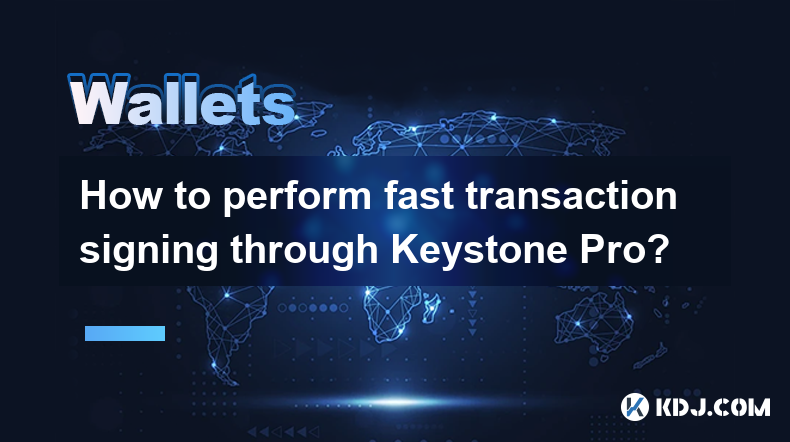
How to perform fast transaction signing through Keystone Pro?
Apr 24,2025 at 09:50pm
Introduction to Keystone ProKeystone Pro is a highly secure and user-friendly hardware wallet designed specifically for cryptocurrency enthusiasts who value both security and efficiency. One of its standout features is the ability to perform fast transaction signing, which is crucial for users who need to execute transactions quickly and securely. In th...
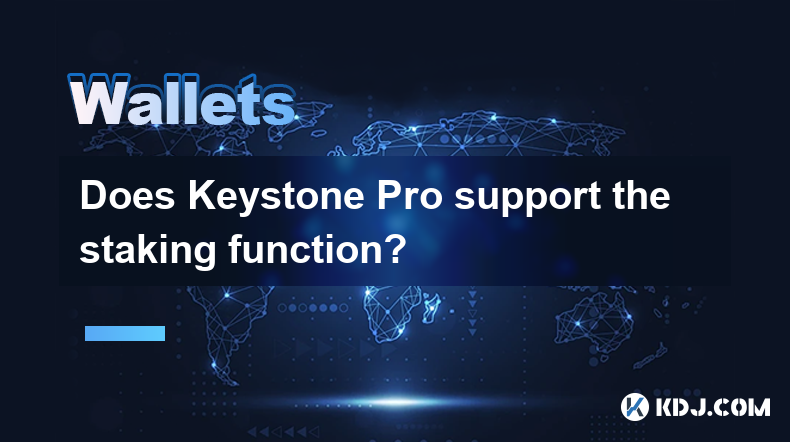
Does Keystone Pro support the staking function?
Apr 24,2025 at 11:22pm
Introduction to Keystone ProKeystone Pro is a hardware wallet designed for the secure storage of cryptocurrencies. It supports a wide range of cryptocurrencies and offers robust security features to protect users' digital assets. One of the frequently asked questions about Keystone Pro is whether it supports the staking function. In this article, we wil...
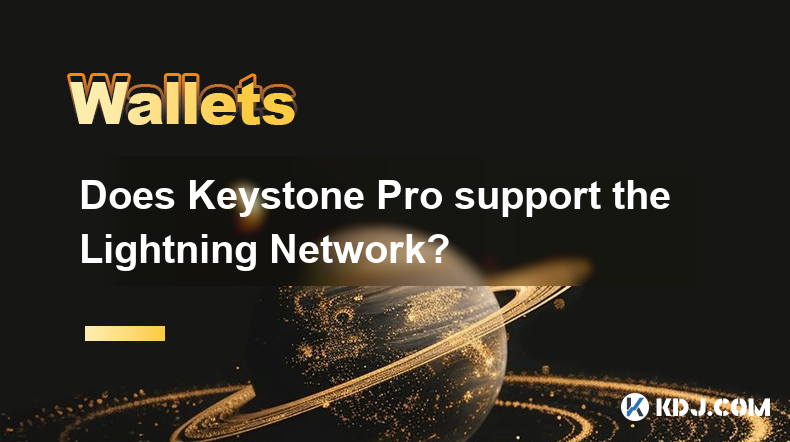
Does Keystone Pro support the Lightning Network?
Apr 24,2025 at 08:56pm
Introduction to Keystone ProKeystone Pro is a hardware wallet designed to provide secure storage for various cryptocurrencies. It emphasizes user-friendly design and robust security features, making it an appealing choice for both beginners and experienced users in the crypto space. One of the frequently asked questions about Keystone Pro is whether it ...
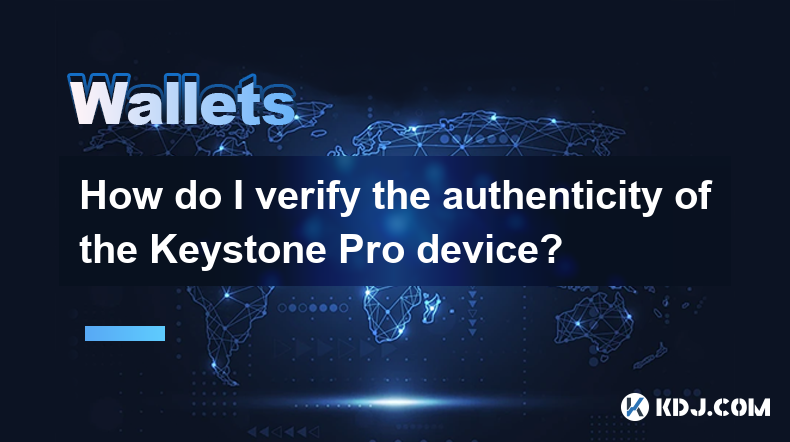
How do I verify the authenticity of the Keystone Pro device?
Apr 25,2025 at 12:14am
Introduction to the Keystone Pro DeviceThe Keystone Pro is a hardware wallet designed to secure your cryptocurrencies offline, providing an additional layer of protection against online threats. Verifying the authenticity of this device is crucial to ensure that your assets remain safe. This article will guide you through the steps to confirm that your ...
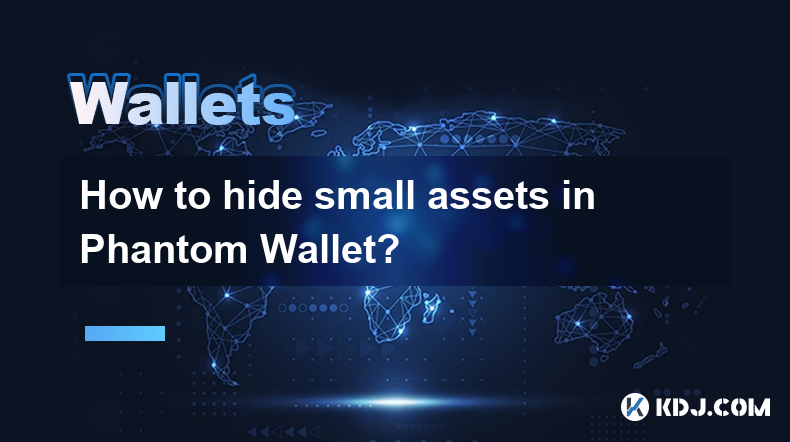
How to hide small assets in Phantom Wallet?
Apr 24,2025 at 05:22pm
Introduction to Phantom WalletPhantom Wallet is a popular non-custodial wallet designed specifically for Solana (SOL) and other cryptocurrencies. It allows users to manage their assets securely and interact with decentralized applications (dApps) seamlessly. One of the features users often seek is the ability to hide small assets within the wallet to ma...
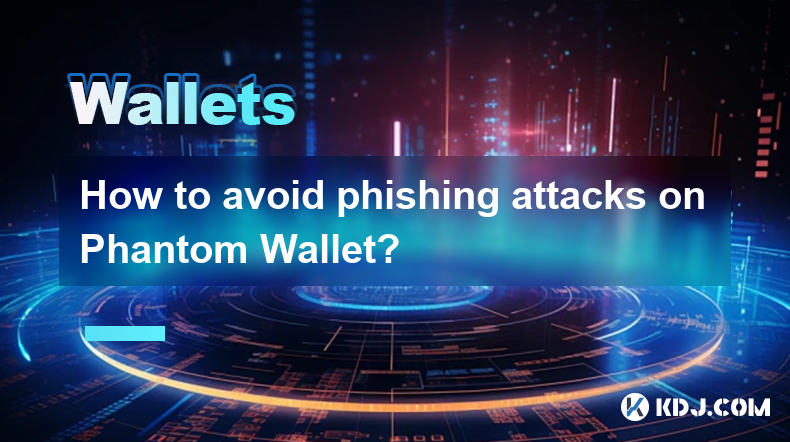
How to avoid phishing attacks on Phantom Wallet?
Apr 25,2025 at 01:15am
Phishing attacks are a prevalent threat in the cryptocurrency world, and users of the Phantom Wallet are not immune to these dangers. Phantom Wallet, a popular non-custodial wallet for the Solana blockchain, offers robust security features, but it's crucial for users to understand how to protect themselves from phishing attempts. This article will guide...

How to perform fast transaction signing through Keystone Pro?
Apr 24,2025 at 09:50pm
Introduction to Keystone ProKeystone Pro is a highly secure and user-friendly hardware wallet designed specifically for cryptocurrency enthusiasts who value both security and efficiency. One of its standout features is the ability to perform fast transaction signing, which is crucial for users who need to execute transactions quickly and securely. In th...

Does Keystone Pro support the staking function?
Apr 24,2025 at 11:22pm
Introduction to Keystone ProKeystone Pro is a hardware wallet designed for the secure storage of cryptocurrencies. It supports a wide range of cryptocurrencies and offers robust security features to protect users' digital assets. One of the frequently asked questions about Keystone Pro is whether it supports the staking function. In this article, we wil...

Does Keystone Pro support the Lightning Network?
Apr 24,2025 at 08:56pm
Introduction to Keystone ProKeystone Pro is a hardware wallet designed to provide secure storage for various cryptocurrencies. It emphasizes user-friendly design and robust security features, making it an appealing choice for both beginners and experienced users in the crypto space. One of the frequently asked questions about Keystone Pro is whether it ...

How do I verify the authenticity of the Keystone Pro device?
Apr 25,2025 at 12:14am
Introduction to the Keystone Pro DeviceThe Keystone Pro is a hardware wallet designed to secure your cryptocurrencies offline, providing an additional layer of protection against online threats. Verifying the authenticity of this device is crucial to ensure that your assets remain safe. This article will guide you through the steps to confirm that your ...

How to hide small assets in Phantom Wallet?
Apr 24,2025 at 05:22pm
Introduction to Phantom WalletPhantom Wallet is a popular non-custodial wallet designed specifically for Solana (SOL) and other cryptocurrencies. It allows users to manage their assets securely and interact with decentralized applications (dApps) seamlessly. One of the features users often seek is the ability to hide small assets within the wallet to ma...

How to avoid phishing attacks on Phantom Wallet?
Apr 25,2025 at 01:15am
Phishing attacks are a prevalent threat in the cryptocurrency world, and users of the Phantom Wallet are not immune to these dangers. Phantom Wallet, a popular non-custodial wallet for the Solana blockchain, offers robust security features, but it's crucial for users to understand how to protect themselves from phishing attempts. This article will guide...
See all articles























































































